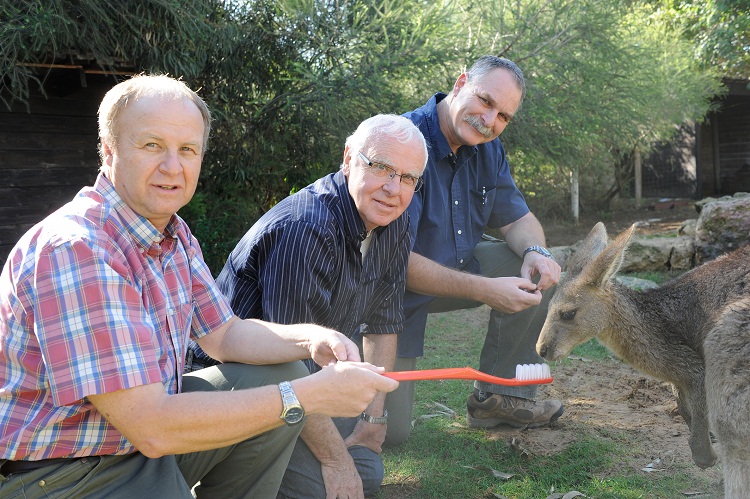The treatment also shows success among dogs and cats suffering from gum problems

Gum disease is one of the more common diseases in the kangaroo population living in captivity and can lead to severe morbidity to the point of death. About 4 years ago, an outbreak of the disease in the "Gan-Guru" zoo resulted in the death of about 40% of all kangaroos in the zoo. Now, scientists from the Hebrew University have developed an innovative treatment for the kangaroo's gum problem that increases the survival rate from the disease to 100%.
Gum disease in kangaroos is caused, among other things, as a result of life in captivity accompanied by stressful factors, processed food and food given without supervision by visitors. Gum disease in animals such as the kangaroo has very serious consequences: an infected kangaroo will soon lose its appetite, and in the absence of proper treatment, will starve to death in a short time. The high death rate from the disease is added to the depletion of the kangaroo population resulting from slow reproduction and low survival rates among kangaroo cubs.
The currently available treatment for gum disease in kangaroos requires the introduction of antibiotics under anesthesia or by force several times a day, and the isolation of the animal for fear of total infection. This treatment may increase the stress the kangaroo is already under, and as you can imagine, it is not easy to force feed a kangaroo that weighs on average between 70 and 80 kg. This situation means that many of the kangaroos are not helped by the treatment, and they die from the disease.
The innovative treatment for gingivitis in kangaroos was developed by Prof. Michael Friedman from the School of Pharmacy at the Faculty of Medicine, Prof. Doron Steinberg from the Faculty of Dentistry and Dr. Eran Lavie from the School of Veterinary Medicine. The treatment combines antimicrobial substances embedded in a polymer carrier that causes a delayed, controlled and slow release of the drug from the preparation: the attending veterinarian applies the drug, similar to lacquer, only once to the infected areas in the kangaroo's mouth. "The disinfectants are gradually released over several days, thereby increasing the effectiveness of the treatment of inflammation," notes Prof. Friedman.
The researchers hypothesized that by making a certain adjustment in the formula of the common medicine for gingivitis in humans, kangaroos could be saved from death. The study, the results of which were recently published in the Journal of Zoo and Wildlife Medicine, was conducted for about three years among the kangaroo populations at Gan Guru in Kibbutz Nir David and at the Tish Family Biblical Zoo in Jerusalem, in collaboration with veterinarians Dr. Mittal Beckel-Weiss and Dr. Nili Avni-Magan. The treatment proved to be successful: all the kangaroos in which the disease was detected at an early stage and who were treated with the experimental preparation were completely cured of the gingivitis within a relatively short period of time. "The new treatment is easier to perform compared to the treatment available today, significantly shortens the recovery time, and is not accompanied by side effects," explains Prof. Steinberg, "the delayed release mechanism immeasurably reduces the animal's suffering, leads to its recovery and enables its rapid return to the group, an important fact Decisive in the medicine of wild animals and zoos".
The new treatment also carries good news for pets, such as dogs and cats. About 80% of dogs aged four and over suffer, in one form or another, from various dental and gum problems. Similar to kangaroos, dogs also suffer from severe gingivitis which may lead to severe systemic disease. In a recent study among dozens of dogs, it was found that the treatment with a delayed-release preparation applied by the dog's owner is effective in preventing and healing the gums and oral diseases in dogs. "The new treatment may be suitable for more animals suffering from gingivitis, thereby reducing their suffering and lowering the rates of morbidity and complications associated with the disease," notes Dr. Lavie. Now, the researchers are looking at ways to incorporate food additives into the medicine in order to make it more palatable for the dogs. Furthermore, the invention is proposed for commercialization by the Hebrew University Research Development Company, which is looking for a partner to develop the treatment in the field of wild and domestic animals.

2 תגובות
Why is it always developed for the dogs and the cats are forgotten on the side? They are much cooler.
Gum disease in animals is caused by inappropriate food or cheap food that sticks to the teeth or leaves tartar
You can also treat the water to prevent scale